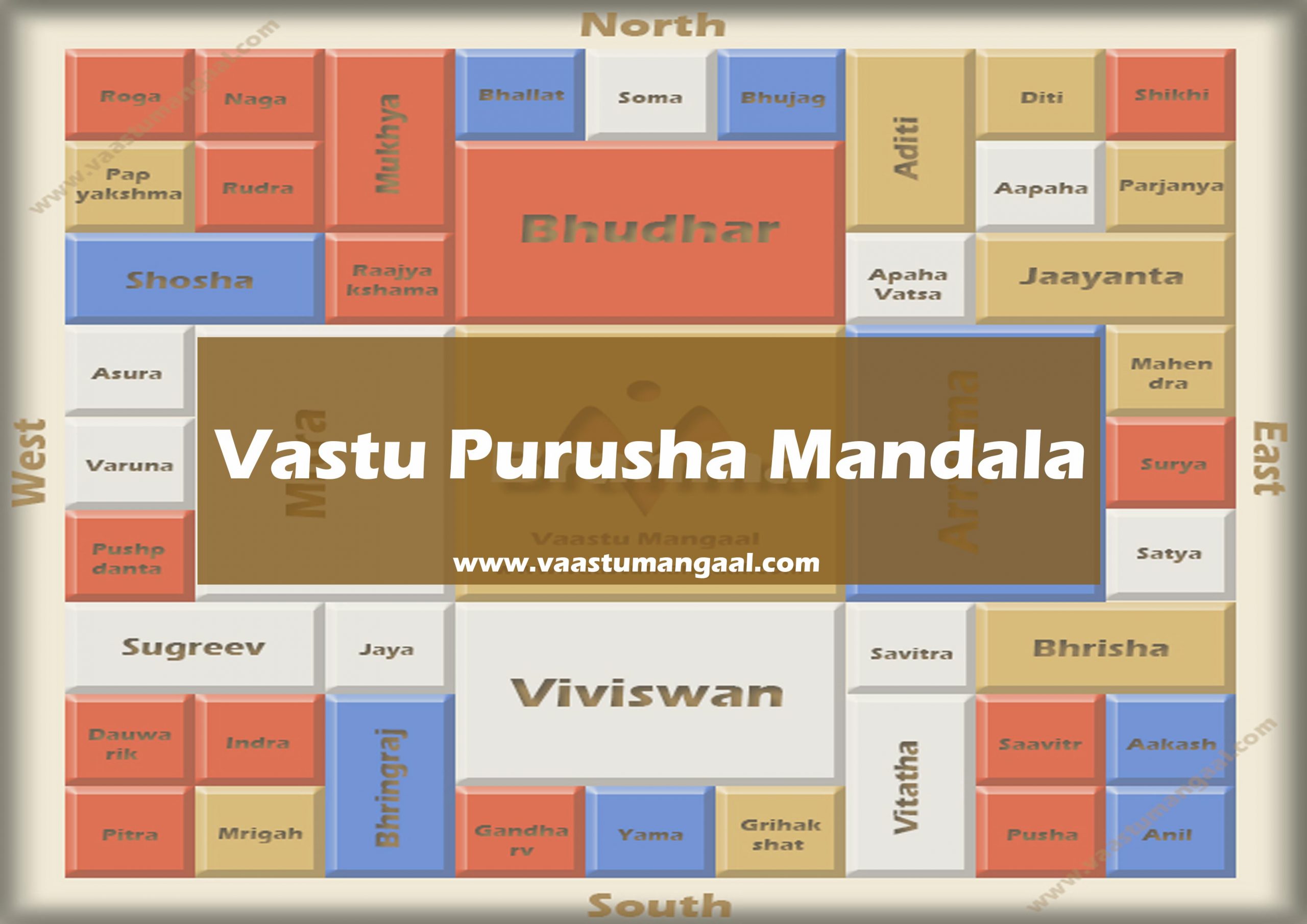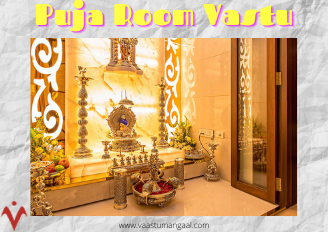Vastu shastra is an ancient, Indian discipline of making the architecture of buildings as per the laws of nature and its elements. But did you ever wonder exactly when and how it came into existence? It all began in the prehistoric era with the emergence of Vastu Purusha Mandala.
Let us take a look at the very fascinating origin of the vastu shastra that emerged with Vastu Purusha Mandala. In this blog, we will explore the significance and attributes of the same, in brief.
The origin on Vastu Purusha Mandala
As per Hindu mythology, the supreme creator of the universe is Brahma. He created a cosmic man while experimenting to create life in the universe. This was the ‘vastu purusha’ and he was no ordinary man. He had an insatiable appetite and thus began to devour anything and everything his eyes set upon.
In no time, he grew so big that his shadow casted a permanent eclipse upon the earth. This ever-growing vastu purusha trigged panic upon the gods too and lord Shiva and Vishnu urged Brahma to intervene before this creature caused ultimate destruction of the universe.
By this time, Brahma too realized the same and sought help from the Ashta Dikapalakas (these are the god and guardians of the 8 cardinal directions). In total it took 45 gods, including Brahma to pin down the Vastu Purusha, flat with his face down onto the ground. Brahma held him in the middle and rest of the god caught hold of its limbs, hands and other body parts. His head lies towards the north east and legs towards the south west.
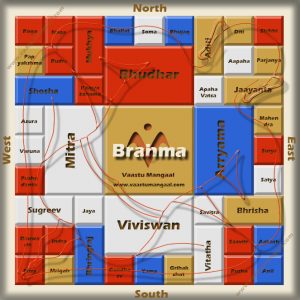
At this point, the vastu Purusha began to cry and solicited to Brahma. He pointed out, as he was created by Brahma; every attribute of him is in fact given by Brahma itself; so why is he being punished for it. Brahma agreed with him, and decided to give him a compensation for this arrangement.
Brahma made Vastu Purusha an immortal being and inseparable entity of Earth. He blessed that vastu purusha will be worshipped by mortals who build any sort of structure on Earth, throughout the ages.
And those who refuse to acknowledge the same can be teased by vastu purusha, to his heart’s content. Thus, Vastu Purusha Mandala was formed.
Significance of Vastu Purusha Mandala
It is the complete guide of understanding energy core and distribution in the vastu. It is an inseparable part of vastu shastra and holds a prime significance while conducting vastu analysis for residential and commercial properties.
The floor plan of any building, particularly its main gate must be done in accordance with Vastu Purusha Mandala. If done so, it brings ample prosperity for its occupants.
Usually Vastu Purusha Mandala is often depicted in square charts to represent the usually shape of the plot. But for better understanding, however, it is drawn in 360 degree chart format, which is universally more popular.
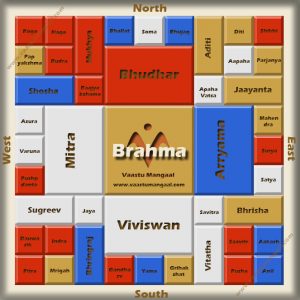
It comprises of 45 gods, out of which 13 are inner gods and rest 32 are outer gods. They represent various aspect of life. The placement of rooms and other sections of the home, channels the attributes of the deity that rules the particular section.
What comprises in the Vastu Purusha Mandala?
In this section, we will elaborate the Vastu Purusha Mandala chart, in brief. Let us list all these 45 deities, one by one, along with learning its significance at a glance. We will begin with 13 inner gods.
The inner 13 deities of vastu purusha mandala
- Brahma- It is the central space of the vastu. It is also known as Brahmasthan. Brahma is the core creator, main manifesto and root of all the energy in the universe. It is highly recommended not to mess with it. Thus it is best left void in any vastu.
(From 2 to 5)
From Brahma emerge 4 main energy fields in 4 cardinal directions, i.e. in North, East, South and West. In this sequence this energy fields are-
- Bhudhar-It offers energy to initiate or begin any work or task.
- Aryama- It offers the expertise to mingle with people and to establish connections.
- Vivasvan- It offers energy to attain peak of success and fame.
- Mitra- It offers energy in the form of motivation to take fruitful action.
(From 6 to 13)
From these 4 energies, along with that of Brahma, emerge 8 more energy fields on diagonal direction (i.e. on NE, NW, SE, SW). These are called the asthsiddhiyan and are named as follows-
- Rudra- it offers energy to carry out tasks, without interruption. It also represent emotional imbalance.
- Rajyaksma/Rudrajaya- it offers supportive and supervising energy to carry out the ideas offered by the mind.
These above 2 energy fields are in the North-West zone of the Vastu Purusha Mandala.
- Apa- it offers energy to attain the right way to accomplish a task, find solution of any problem and to promote healing.
- Apavatsa- it offers helping energy for apa and also act as a reservoir of nutrition.
These above 2 energy fields are in the North-east zone of the Vastu Purusha Mandala.
- Savita- only planning is not adequate in life. This field offers motivational energy to begin any action.
- Sosa/savitra- it offer supportive energy for savita, and towards managing funds.
These above 2 energy fields are in the South-East zone of the Vastu Purusha Mandala.
- Indra- it offers energy to expand on property and especially, business. Highly beneficial for business properties.
- Jaya/Indrajaya- it offers helping energy to carry out the tasks of Indra, in the form of tools, skills and mediums.
These above 2 energy fields are in the South-West zone of the Vastu Purusha Mandala.
The outer 32 deities of vastu purusha mandala
With this, we have listed out all the 13 inner deities of any vastu. Now, let’s list the rest 32 outer deities of the vastu.
We will begin with listing the 16 deities in the 4 cardinal directions, at first.
(From 14 to 29)
- Mikhya- it is the house of Vishwakarma and offers energy for carrying out the intended tasks.
- Bhallata-it represents abundance and fulfillments of any work. It helps to bag significant wealth for its occupants.
- Soma- it lies in the house of Lord Kuber and represents the elixir of life. It offers ample amount of wealth and is highly beneficial for business owners.
- Bhujanga- it represents the medicine and treatment. It offers healing and also immunity to keep illnesses at bay.
These above 4 energy fields are in the North zone of the Vastu Purusha Mandala.
- Jayanta- it offers determination to carry out the tasks in practical life. It contributes towards shaping the future.
- Indra/Mahendra-it offers complete control of all the senses and concentrates them for fruitful work.
- Ravi/surya- it represents the Sun and offers energy to carry out activity. It gives foresight to complete analyze any situation or task.
- Satya- it represents righteousness. It generates create good thoughts, and morals.
These above 4 energy fields are in the East zone of the Vastu Purusha Mandala.
- Vitatha- it represents false illusion, and pretension. This energy field can influence how a person behave and react. It should be avoided without vastu supervision.
- Grahksta- it represent stability and undivided attention. It gives power to offer best decision or guidance.
- Yama- it represents the lord of death and law. It offers principles to lead the perfect life.
- Gandharva- it is associated with lord Narad. It offers energy to bring out the creativity, art, connectivity, wisdom etc from a person.
These above 4 energy fields are in the South zone of the Vastu Purusha Mandala.
- Sugriva- it represent Swan and its power. It offers power to get the best of everything, obtain knowledge and urge to do well in life.
- Pushpadanta-it offers assistance to carry our any task. Any flaw in this field can cause hindrance to complete any work.
- Varuna- it represent ocean god. It offers bonding to the earthly affairs and helps to have control on oneself.
- Asura- it represents delusion, chaos, and unsystematic thoughts. If is left weak, it can lead to confusion. If it is done right, it can help get rid of false temptations.
These above 4 energy fields are in the West zone of the Vastu Purusha Mandala.
At last its time to list the remaining 16 deities. They lie in the diagonal directional orientation.
(From 30 to 45)
- Sosa- it represents removal and elimination of all the negative aspects of your life.
- Papayaksma- it brings out some negative aspect of life, such as diseases, alcoholism and weak mindset. It is best left unutilized without vastu correction.
- Roga- it can drain the energy of goo aspect of vastu, if left weakened. If corrected, it can offer support and destroy illnesses.
- Naga- it represents Vasuki, the mighty snake worn by Lord Shiva. If left weakened, it causes jealousy, desire and temptations.
These above 4 energy fields are in the North-West zone of the Vastu Purusha Mandala.
- Aditi- this is the house of Aditi, the mother of all devas. It offers safety and confidence.
- Diti- this is the house of Diti, the mother of all asuras. It offers foresight and wealth, and clarity of mind.
- Shikhi- it is an attribute to Lord Shiva, represents fire and offers potential to make an ideal come alive.
- Parjanya- it is associated with blessings of rain and thus offer fertility and offers good result of any work done.
These above 4 energy fields are in the North-East zone of the Vastu Purusha Mandala.
- Bhrisa- it offers the triggering energy or force or power that initiates action.
- Akasha- it represents sky or space element and it creates opportunities to make your work or activity successful.
- Anila- it represents the Vayu god and also the fire element in the vastu. It offers support and energy to uplifts the result of any task.
- Pusa- it represents nourishment and offers strength and energy to carry out any work.
These above 4 energy fields are in the South-East zone of the Vastu Purusha Mandala.
- Bhringraja- it represents a demon of same name. It extracts all the benefits of any situation for you and eliminates the rest of it.
- Mriga- it evokes the thirst of curiosity and finding the best aspect of it. It represents both focus and lack of focus for long.
- Pitra- it represent the ancestral zone. It offers their blessings to the occupants.
- Dauvrika- it represent the sacred Nandi, the doorkeeper of Lord Shiva. It offers protection and act as a guardian force against negative forces.
These above 4 energy fields are in the south-West zone of the Vastu Purusha Mandala.
It is important to take note that, even though we refer to them all as deities; they comprises of both devas and asuras. It means that it includes both positive and negative aspect in a given space. Thus, it is crucial to know which aspects to adapt and which to avoid, and how to strengthen them, in the Vastu Purusha Mandala.
Seeking vastu for home and other properties has become more popular than ever before. With increasing awareness among people related to the vastu shastra; people are realizing the importance of the same. Its trace can be seen throughout the history of Indian civilization.
In fact, in the most ancient civilization, it was sort of customary to implement the guidelines of vastu shastra for any building itself. The imprint of the same can still be seen in ruins of Indian architecture and ancient temples that still stands today.
It is highly recommended to seek vastu consultant for every property these days, in order to make sure of prosperous living ahead. To know more about Vastu Purusha Mandala, get in touch with our experts at Vaastu Mangaal.
If you found this blog useful, don’t forget to share it with your family and friends as well, to spread this knowledge.



 (0)
(0)